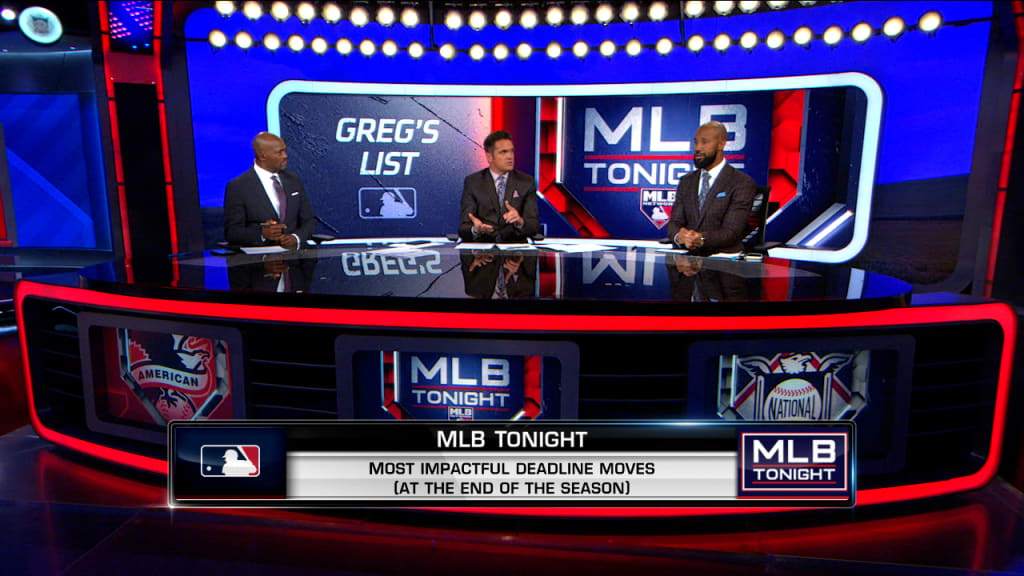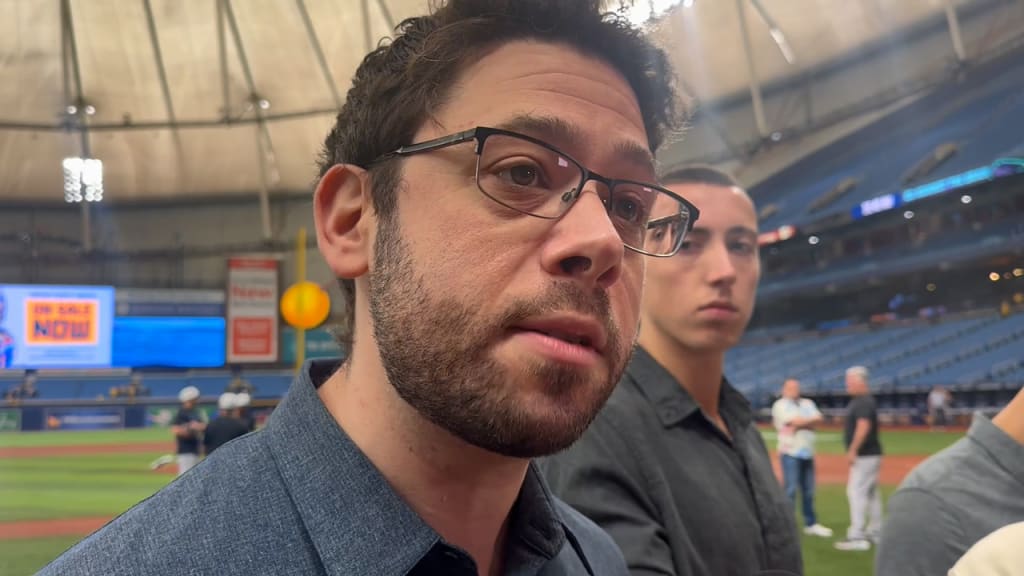Here's who MLB execs think won the Trade Deadline
This browser does not support the video element.
It was a Trade Deadline unlike any other in recent memory.
There were a total of 58 trades completed leading up to 6 p.m. ET last Tuesday, yet the ledger included a remarkable lack of impact players and prospects. Only two 2024 All-Stars were moved (Isaac Paredes to the Cubs and Tanner Scott to the Padres) and only two players on MLB Pipeline’s preseason Top 100 prospect list were traded (Dylan Lesko to the Rays and Robby Snelling to the Marlins), though both were likely to fall off the list during the midseason re-rank.
“My biggest takeaway was the sheer volume of moves coupled with the lack of big-time prospects dealt away,” one National League executive said. “Most competing clubs were able to upgrade around their margins without touching the tops of their systems.”
“There are a few prospects who moved who I might take ahead of a few of the Top 100,” another NL executive said. “But that's eye-of-the-beholder stuff; there were no ‘wow’ pieces that moved, really on either side of the ledger.”
This browser does not support the video element.
Another NL executive believes clubs “value their own prospects very highly,” leading to the lack of Top 100-type deals. That, combined with the expanded postseason format, led to a number of smaller deals rather than the big blockbusters we’ve all become accustomed to seeing this time of year.
“There is overall parity driven by the extra playoff team, plus fewer teams in full rebuild mode,” the NL exec said. “With teams either in really good shape from a playoff odds perspective or in a huge clump of contending teams, there were only a few that were ready to make a big push to improve their odds.”
“It was a pretty rigid market,” an American League executive said. “The usual ‘aggressive’ type buyers weren’t active due to so-so teams or lack of prospects to trade from.”
There were some moves that teams’ decision-makers believe will have an impact on the pennant races, most notably the Dodgers’ acquisition of Jack Flaherty, the Mariners’ trade for Randy Arozarena and the Padres’ move to add Scott. But unlike recent years, when names such as Juan Soto and Manny Machado were traded, there was no top-level superstar changing uniforms.
“Lots of moves without a lot of impact,” one AL executive said of the Deadline. “The best hitters moved were probably Arozarena and Paredes, and the best pitchers were [Yusei] Kikuchi and Flaherty. Not exactly big splashes.”
“The prices on elite players were so high that nearly every team pivoted to the second and third tiers,” an NL exec said. “There were more complementary moves than usual as a result.”
The abundance of moves were noteworthy, and while no “blue-chip prospects” were dealt, the returns on most veteran players were widely considered to be in the seller’s favor.
“The teams that decided to sell were rewarded,” an AL exec said. “I was surprised by some big-market teams with bad records that bought or held.”
To the latter point, the Angels were mentioned by multiple executives as a team that could have benefited more from the seller’s market with players such as Tyler Anderson, Taylor Ward and Luis Rengifo, all of whom are slated to become free agents at the end of 2025.
“I get the teams that made moves and why they made them, but I was more interested in the teams that didn’t do much,” an AL exec said. “If you’re the Tigers or Giants, you can squint and see a path to contention over the next couple years because they have good resources and some good young players. The Angels? I would love to hear what they see as their path forward.”
This browser does not support the video element.
The Giants were a polarizing team among executives, as well. San Francisco traded Jorge Soler to the Braves and Alex Cobb to the Guardians, but largely stood pat aside from those deals.
“I didn’t quite get the Giants moving Soler and then not moving any of their other guys,” an NL executive said. “He’s been a good player for them, and if they were going to keep the rest of that roster intact, why not keep him on it, as well?”
The left-handed trio of Blake Snell, Tarik Skubal and Garrett Crochet were popular names on the rumor mill leading up to the Deadline, yet none were traded. The top starting pitchers that moved were Flaherty, Kikuchi, Zach Eflin, Frankie Montas and Michael Lorenzen, though Flaherty is the only one widely considered to be a huge difference-maker.
“My sense is more teams felt comfortable with their pitching this Deadline than years past,” an AL executive said.
One team caught the attention of front-office types more than any other: the Rays. Tampa Bay made eight trades in July, adding 16 players to the organization while dealing away players including Arozarena, Paredes, Eflin, Jason Adam and Aaron Civale.
This browser does not support the video element.
Unlike years past when teams still in contention decided to sell – think of the 1997 White Sox and their infamous “White Flag” trade and the 2015 Tigers, who traded David Price to the Blue Jays, two teams that stood just 3 1/2 games out of a playoff spot – the Rays’ choice to sell off a number of pieces despite being only five games out of a Wild Card spot was not met with skepticism. In fact, most executives believe Tampa Bay did a masterful job of navigating the market.
“What stood out most to me was the willingness of the Rays to move so many players while still seemingly staying focused on competing now and in the immediate future,” an NL executive said. “That is a really tough needle to thread and I thought they did a tremendous job.”
“I think it says something about the way the sport is now viewed that the White Flag trade of ’97 achieved legendary status, even though their playoff odds were actually pretty low at the time,” an NL executive said. “The Rays did that and then some, and while people can argue about whether they should have or not, I don’t think that what they did will get the same notoriety. We just understand these odds better now.”
This browser does not support the video element.
Here were some other thoughts from executives around baseball:
“I think the Marlins cleaning house was great and shows they’re serious about starting over and building a winning team from scratch. Stocking up on prospects like that was exactly what they should have done.” – NL executive
“I thought the Dodgers were the best combo of impact and value.” – AL executive
“I am still a bit confused by the Eloy Jiménez deal to Baltimore. That seemed like a bit of a forced deal to me and I’m not sure how necessary it was for the Orioles.” – NL executive
“The Dodgers have traded Oneil Cruz and Yordan Alvarez. Maybe there’s a star in [the return the White Sox received for Erick Fedde, Michael Kopech and Tommy Pham]. There almost has to be.” – AL executive
“I get why the Rangers did what they did. Texas has an uphill battle to win, though in a winnable division. Are you really going to sell [Nathan] Eovaldi, [David] Robertson and [Kirby] Yates? They probably could have done OK given the prices for Kikuchi, [Carlos] Estévez and Scott, but you have a veteran team that just won the World Series, Bruce Bochy is your manager and you’re getting 40,000 fans a night. It’s a tough call. Seattle and Houston are good, but not elite, so I understand their decisions.” – AL executive

